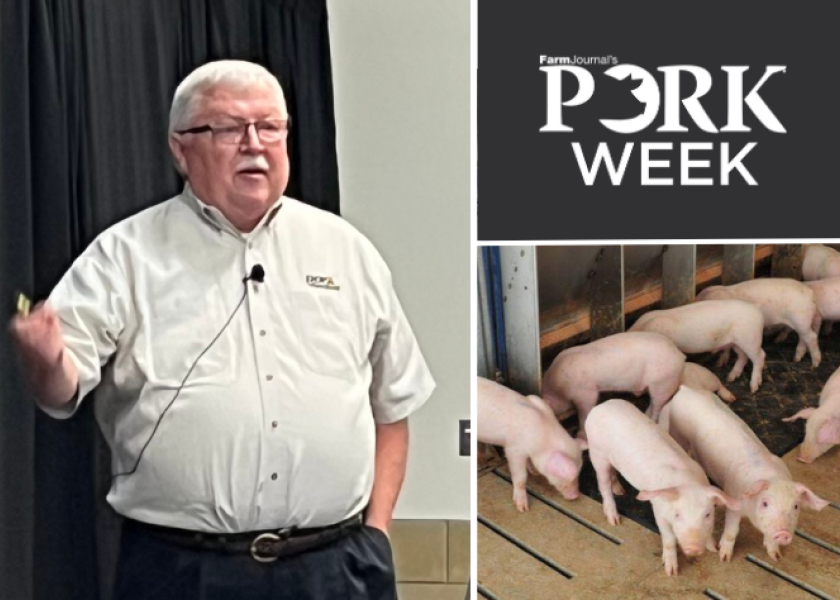Discouraging Outlook Ahead but Bright Spots Exist – Part 1

Two respected economists in the pork industry spoke to a packed room at World Pork Expo in Des Moines, Iowa on Wednesday morning, June 7. Their message was bleak: Don’t expect 2023 to be a profitable year, and 2024 is likely to be difficult as well.
“Production costs have entered a new era they aren’t likely to go back,” says Steve Meyer, PhD, an economist with Partners for Production Agriculture. He believes the upcoming USDA Hogs and Pigs Report (to be published at the end of June) will reflect reduced supplies due to the overall profitability picture.
In terms of returns to producers, Meyer says 2021 was good, 2022 was bad and 2023 is likely to be worse, “not because of hog prices (relative to history) but because of costs – they’ve exploded the last couple of years.”
Other factors impact the present situation as well:
Proposition 12
The law in California isn’t new – it was enacted on Jan. 1, 2022 – but it will be enforced starting July 2. “The definition of ‘housed in a cruel manner’ changed when this law was enacted,” he states. It was pushed by animal rights groups, not because they want compliant pork sold in California, but because they don’t want any pork sold in California, Meyer reiterates.
“What this means is that on July 2, 5% to 8% of production must find another market and It will put downward pressure on prices,” he says. Additionally, any citizen in California can file a lawsuit, and undoubtedly district attorneys will be salivating over the potential opportunity.
Input Costs
The 2023 corn crop was planted ahead of schedule and looks good at the present time, but parts of the Midwest are very dry, says Meyer. “You still need rain on corn in July and rain on soybeans in August or you don’t have a crop,” he points out, so future grain prices are an unknown.
Regarding ethanol, the move toward electric vehicles will certainly impact ethanol, but Meyer says renewable diesel demand will grow and so will sustainable aviation fuel.
“Increased use of soybean oil means more meal,” Meyer explains. “Soybean meal is going to get cheaper and that will fundamentally change how you feed pigs. In addition, the value of manure will go up and that’s a possible break for costs.”
Demand – A multi-level Issue
Domestic wholesale demand is derived from domestic consumer-level demand, which is a combination of retail and foodservice demand along with retailer and restaurant costs and profits, explains Meyer. Wholesale pork demand is comprised of domestic wholesale demand as well as export demand.
Demand change is driven by four other factors: prices of competitor goods; prices of complement goods (for instance, did the high cost of eggs hurt bacon prices?); income level of producers; and tastes and preferences, he adds. Consumers saw their income levels increase during the pandemic (stimulus payments played a factor) and they had fewer places to spend their income, so per-capita expenditures for beef, pork and chicken were at record high levels in 2021. However, consumption of pork has returned to pre-pandemic levels.
Exports are a bright spot, and there is potential for growth in Central and South America. “Exports are up 8% already for 2023,” says Meyer. “This is a positive for the industry but it likely won’t be enough to get producers to strong profitability levels.
Editor’s Note: See the upcoming Part 2 for a review of comments from Lee Schulz, Iowa State University economist at the 2023 World Pork Expo.







